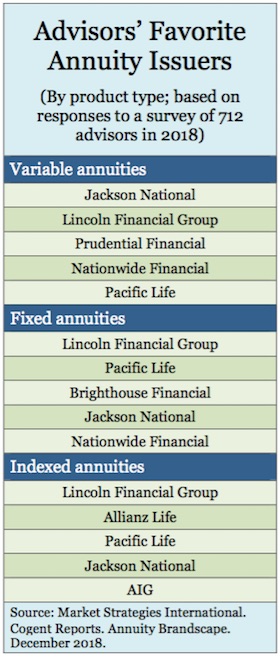Prudential promotes “sidecar” savings plan for emergencies
Prudential Financial, Inc., is asking employers to add an after-tax emergency savings feature to their 401(k) plans to help workers save for unexpected expenses.
The emergency savings feature, which is part of Prudential Retirement’s “financial wellness” offerings, gives workers an alternative to savings and investment accounts outside the workplace. It also helps stop the drain on pre-tax retirement contributions.
Linking emergency savings to an employer-sponsored retirement plan provides other benefits such as no minimum account balance and lower investment fees than a worker might pay at a brokerage, a Prudential release said.
The feature allows employees to withdraw their after-tax savings if an emergency arises, while preserving the before-tax retirement contributions. Any earnings that are withdrawn are subject to taxation as well as a 10% premature distribution tax, if withdrawn before age 59½.
Just 26% of Americans are on track toward building an emergency savings account, Prudential’s 2018 Financial Wellness Census found. Only an estimated 15% of millennial and Gen X veterans are on track toward building an emergency savings account.
During the partial government shutdown earlier this year, nearly half of affected federal workers fell behind in paying bills and 83% reported higher overall stress levels, a 2019 Prudential survey found. Earlier research found that most Americans cannot pay for a $500 emergency.
After-tax contributions are the least used of the three retirement savings options available to most private sector workers, including before-tax contributions and a Roth 401(k) option. Just 14.6% of employers offer an after-tax savings option within their 401(k) plan, according to 2016 Plan Sponsor Council of America data.
In 2018, Prudential Retirement introduced an emergency savings feature for workplace 401(k) plans to provide employees the opportunity to make after-tax payroll contributions alongside before-tax contributions.
Prudential has offered its own employees an after-tax savings feature through its 401(k) plan for many years, along with before-tax and Roth 401(k) contribution options.
Student loan payments are eligible for partial match in Travelers 401(k) plan
Under The Travelers’ “Paying It Forward Savings Program,” employees of The Travelers Companies, Inc., can make payments toward student loans that will qualify for the company’s 401(k) plan matching program.
As part of its benefits package, Travelers has a “matching” program for employee contributions to 401(k) accounts. Beginning in January 2020, when The Travelers Paying It Forward Savings Program takes effect, student loan payments will also be taken into account when determining the company’s 401(k) contribution.
“Employees, including those who are not in a position to contribute at all to their 401(k) accounts because of student loans, who participate in the new program could accumulate tens of thousands of dollars in their 401(k) accounts over a decade, which could be worth hundreds of thousands of dollars at retirement,” a Travelers release said.
According to the Federal Reserve, student loan debt in the United States reached more than $1.5 trillion at the end of 2018. The Fed’s latest Report on the Economic Well-Being of U.S. Households noted that 41% of 18-to 29-year-olds said they had no retirement savings and that 42% of those who had attended college, representing 30% of all adults, incurred debt for their education.
Athene attributes losses to adverse interest rate, equity market conditions
Athene Holding Ltd., a provider of retirement savings products, has reported a net loss of $104 million $(0.53) per diluted Class A share for the fourth quarter of 2018, down from net income of $439 million ($2.22 per share) for the fourth quarter of 2017, the company reported this week.
“The loss was driven by unfavorable changes in reinsurance embedded derivatives due to credit spread widening, as well as unfavorable changes in fixed indexed annuity derivatives due to equity market depreciation,” a release said.
Net income for the full year 2018 was $1.05 billion, or $5.32 per diluted share, compared to net income for the full year 2017 of $1.36 billion, or $6.91 per diluted share.
Adjusted operating income1 for the fourth quarter 2018 was $240 million, or $1.23 per adjusted operating share, compared to adjusted operating income for the fourth quarter 2017 of $313 million, or $1.60 per adjusted operating share. The decrease was driven by higher other liability costs resulting from equity market depreciation. Adjusted operating income for the full year 2018 was $1.14 billion, or $5.82 per adjusted operating share, compared to adjusted operating income for the full year 2017 of $1.06 billion, or $5.39 per adjusted operating share.
Highlights of Athene’s fourth quarter and EOY earnings report included:
ROE of 12.1%, Retirement Services adjusted operating ROE of 18.4%, and Consolidated adjusted operating ROE of 13.9% for the full year ended December 31, 2018
- Book value per share of $42.45, a decrease of 9% for the year-over-year period ended December 31, 2018
- Adjusted book value per share of $45.59, an increase of 19% for the year-over-year period ended December 31, 2018
- Closed previously announced block reinsurance transaction with Lincoln Financial Group totaling $7.9 billion of liabilities, effective October 1, 2018
- Total Deposits of $13.0 billion and $40.2 billion for the quarter and year ended December 31, 2018, respectively
- Organic deposits of $5.2 billion and $13.2 billion for the quarter and year ended December 31, 2018, respectively
- Inorganic deposits of $7.9 billion and $27.0 billion for the quarter and year ended December 31, 2018, respectively
- Ranked #2 carrier in fixed indexed annuity (“FIA”) sales for the two years ended September 30, 20182
- ALRe RBC of 405%3 and U.S. RBC of 421%, as of December 31, 2018
- Repurchased $147 million of common stock from December 10, 2018 through February 22, 2019
“In 2018, we continued our disciplined strategy of capital stewardship and opportunistic deployment,” said Jim Belardi, CEO of Athene. “We grew invested assets by more than 45%4, marking 2018 as a year of acceleration for Athene. Our multi-channel distribution model generated record organic growth of more than $13 billion, and this was complemented by closing two inorganic transactions in a calendar year for the first time in our history, totaling an additional $27 billion. Importantly, we underwrote this new business to the same high return standards we have historically.
“In the current environment, it’s clear the market has not properly valued the growing earnings power of our business, so we commenced opportunistic share repurchases totaling $147 million,” Belardi added. “
Since these repurchases were executed at an average share price in line with our initial public offering price more than two years ago, when the size and earnings profile of Athene was significantly less than it is today, we believe this method of capital deployment will prove very accretive.”
© 2019 RIJ Publishing LLC. All rights reserved.













